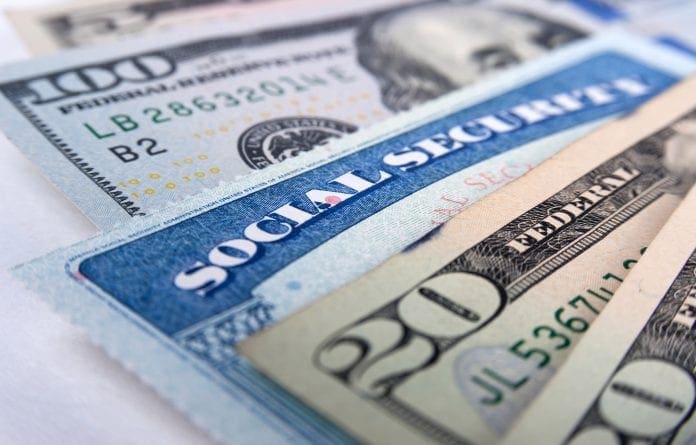The pandemic-era expanded Child Tax Credit stimulus check that helped families with monthly stimulus checks of between $250 and $300 per child to millions of families ended abruptly at the end of 2021. Despite efforts by President Biden and the Democrat Congressmen, it died an untimely death.
The expanded CTC stimulus checks raised cash income by nearly 50 percent for benefitting families. It also provided them a brief respite from the frugal norms of most American families.
The events that led to this temporary program and also its untimely end were extraordinary in many ways. Technically the stimulus check was a tax credit expansion but more plainly a series of monthly stimulus checks to families with children. It was an extraordinary initiative in every way.
The concept of the Child Tax Credit guarantees income in a nation that has always been long resistant to such an idea. The CTC payments emerged from being an obscure federal support system to win the support of millions of Americans and aided low and moderate-income families during and after the pandemic. Most importantly, it managed to cut child poverty by around fifty percent.
But then the Child Tax Credit died an untimely death after the first year. President Biden’s efforts to extend it drew total Republican opposition. More crucially, the president was betrayed by a single senator. Joe Manchin, whose opposition to the Child Tax Credit was fuelled by corporate lobbies, used his vote in a Senate split down the middle to stymie any chances of extending the Child Tax Credit to at least 2025.
Critics have denounced the monthly payments of up to $300 per child as an expensive scheme. The Republicans maintain that the welfare scheme would deter parents from working as it would provide cash aid regardless of whether they had jobs.
Restoring The Expanded Child Tax Credit Remains A Long-Term Democratic Goal
While the expanded Child Tax Credit payments have been reduced to their earlier version, the fight to retain it has not. There has been renewed evidence that proves that the payments lowered poverty and nurtured children. And it did not rescue parental employment as critics have alleged.
The Democratic Party camp still hopes to revive a form of the Child Tax Credit by enabling payments for small groups of beneficiaries. This they seek to accomplish as part of a tax deal as an immediate solution. But the restoration of the expanded Child Tax Credit program remains the ultimate goal of the Democrats.
The expanded Child Tax Credit proved that getting money directly into the hands of parents can really make a difference. For the Democrats, the reversal was soul-crushing, but their commitment to the Child Tax Credit remains absolute.
Supporters of the Child Tax Credit have pointed out impressive short-term benefits. But skeptics have argued that the short-term run was too short to test the efficacy of the guaranteed cash. They also say that the short-term benefits were less impressive than the Democrats maintain. But they are forced to maintain that though the reduction in material hardship was significant, there was much that could be done for families with children.
For a family with two to three children, the $00 to $750 they received constituted more than 50% of the total income for the majority of low-income beneficiaries. It helped them move above the poverty line and helped them afford basic which had been denied them for most of their lives.
Most of the aid went to bills. But there were breaks from the frugal norms for families that helped in giving a psychological boost to children doomed to a tedious life. Things like better clothes, and a family vacation, all helped families to give a prop to their children and made things better during difficult times.
But the end of the payments threw back families into the position they were in before the Child Tax Credit payment commenced. It has again meant not enough food on the table, delays in paying bills, and paying higher interest on credit cards and other short-term loans.
Child Support A Permanent Feature In Many Countries
The consent of cash aid to families with children is a reality in many countries. They offer cash aid that subsidizes the cost of child-rearing. But the idea has historically gained little traction in America. Faith in upward mobility has held sway and the deep divide has slowed the growth of the welfare state.
The growing interest in support for families with children is rooted in the wide chasm that lies in American society. Like always, Republican action undid a vital purpose of the Child Tax Credit, which was to reach the poorest households.
A Republican tax cut doubled the value of the Child Tax Credit but extended it to high-income families. The law also retained earning requirements. This led to the poorest third of the American population benign denied the Child Tax Credit as they did not file income tax returns.
Republicans maintain that it is logical that tax credits should favor taxpayers. But there are deep inequities in a child’s policy that exclude that part of the American population that needs it the most.
The pandemic offered the Democrats a chance to prove the efficacy of such direct payments and the Republican argument was flawed. The Rescue Plan provides the financial backing that helped the federal administration give six monthly payments of between $250 and $300 to each child depending on their age.
It constituted fifty percent of the total amount. The balance was paid with the income tax return the following year in spring as a lump-sum payment. Supporters believed that the program that had been kept temporary to bring down costs would prove to be too popular to lapse.
The cost of a single year of expansion was $100 billion. It cut child poverty by 36% while the overall decline in child poverty crossed the 46% mark. It was an unprecedented drop within one year.






